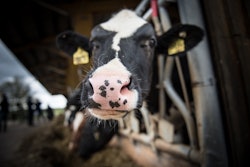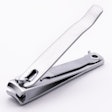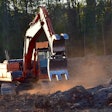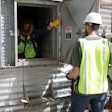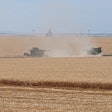
When it comes to grain elevators and other allied processing facilities, gun violence and active shooters aren’t usually top of mind.
Last week, however, at Agrex Elevator in Superior, NE, a man who had been firedreturned with a gun and shot three people, killing one, before he was shot and killed by another employee. A second victim passed away after being air lifted to a nearby hospital.
If this happened at your grain handling facility, would you be prepared?
NGFA offers a multitude ofsafety resources, includinghow to create an emergency action plan.
OSHA’s grain handling facilities standard29 CFR 1910.272 (d)requires grain, feed and processing facilities to develop and implement an Emergency Action Plan (EAP) to meet the requirements contained in the agency’s EAP standard29 CFR 1910.38.
An EAP is designed to facilitate and organize the actions taken by an employer or employee during workplace emergencies.
A well-developed EAP, combined with proper employee training that explains the roles and responsibilities specified within the plan, can help minimize employee injuries and structural facility damage that otherwise could occur during an emergency event.
电活性聚合物要写的,在工作场所和保存available for review by employees. An exception applies to employers with 10 or fewer employees, in which case employers are not required to have a written plan and may communicate the plan orally to their staff.
The EAP at a grain, feed or processing facility should address situations that have the potential to occur on the workplace site. Such situations could include, but are not limited to, inclement weather, fire, explosion, derailment, electrocution, violence in the workplace and biological/terroristic threats.
Minimum Requirements of an EAP
To meet OSHA requirements, the EAP at a minimum is to include procedures for:
- Reporting a fire or other emergency
- 紧急疏散,包括类型的evacuations and exit route assignments
- Designated employees who are to remain to perform critical plant operations before evacuating
- Accounting of all employees, customers and visitors
- Employees performing rescue and medical duties
NGFA notes it's always good practice to provide a list of names with job titles of other company employees who may need to be contacted by those executing the emergency plan. These individuals are typically upper supervisory or management personnel who can provide those implementing the EAP with further details of their positional duties and responsibilities, and further steps to be taken within the plan.
Employee Alarm Systems
An employer must have and maintain an alarm system(s) that has a distinct signal for each purpose addressed in the plan. Situations that might require a different tone or rhythm of alarm under and EAP include:
- Severe weather
- Fire and/or Explosion
- Violence in the workplace
These alarms should be kept independent of operational or system alarms, such as those that may denote plugged equipment, conveyance slowdowns, temperature differentials or dryer notifications.
Training
An employer is required to designate and train employees to assist in safe and orderly evacuation of other employees and those who perform critical plant procedures before evacuating themselves.
Review of the Emergency Action Plan
An employer is required to review the EAP annually and with each employee covered by the plan when:
- The plan is developed, or the employee initially is assigned to a job
- The employee’s job responsibilities or the plan changes
Best Practices
- Be familiar with OSHA’s EAP regulations.
- Invite local first-responder agencies to the facility to discuss the EAP.
- Provide first responders with maps and egress routes of the facility.
- Consult with safety and regulatory specialists when designing new facilities and/or facility upgrades concerning appropriate locations and types of egress.
- Conduct and document appropriate EAP training with employees.
- Conduct and document annual EAP exercises and make plan improvements as necessary.
For more safety information, visitngfa.org/safety.
Each year, NGFA jointly sponsors regional safety seminars with affiliated state and regional grain and feed associations. The one-day conferences focus on keeping grain handling employees physically safe. Clickherefor more information.






